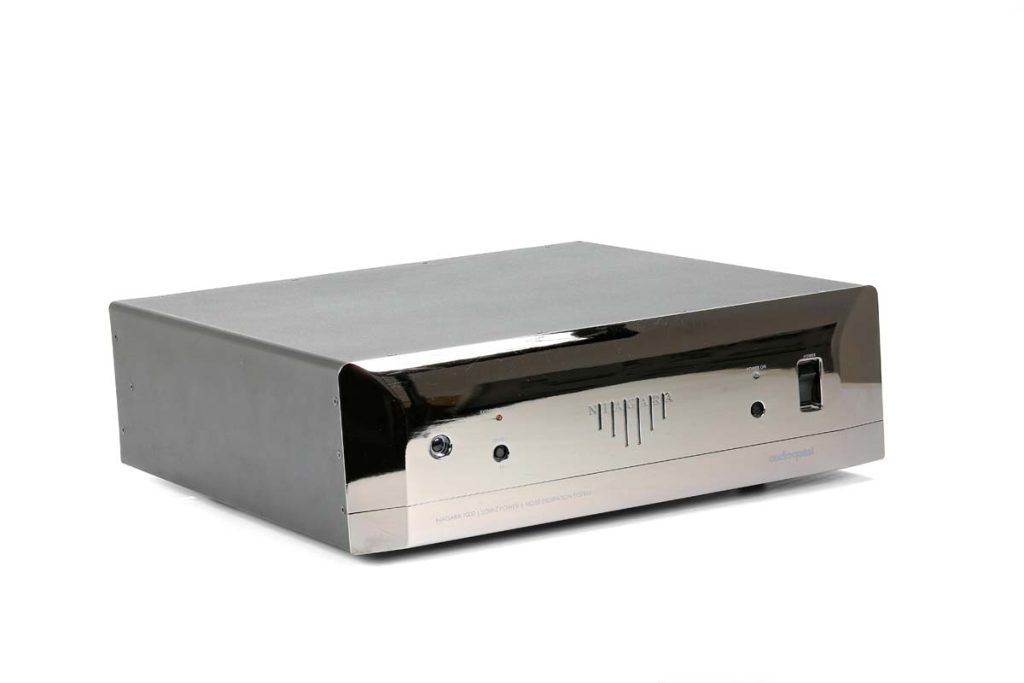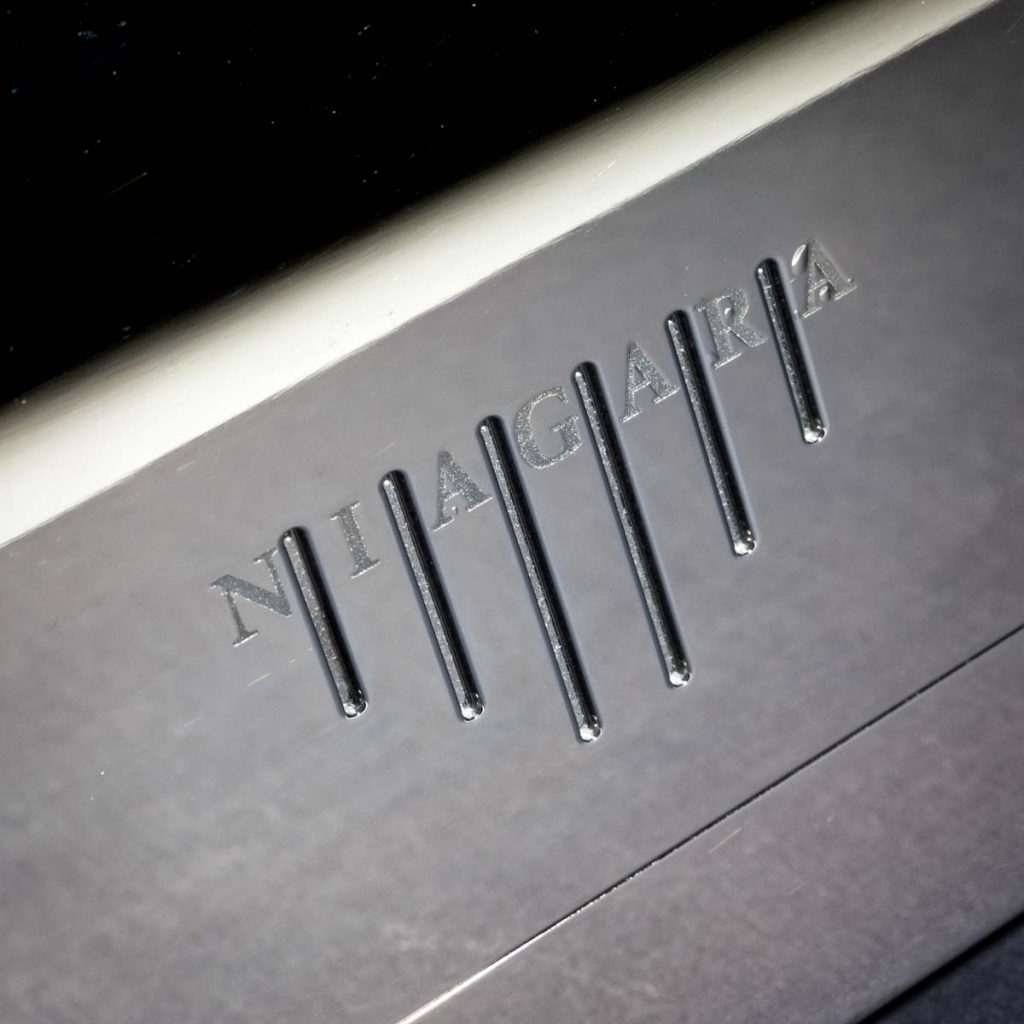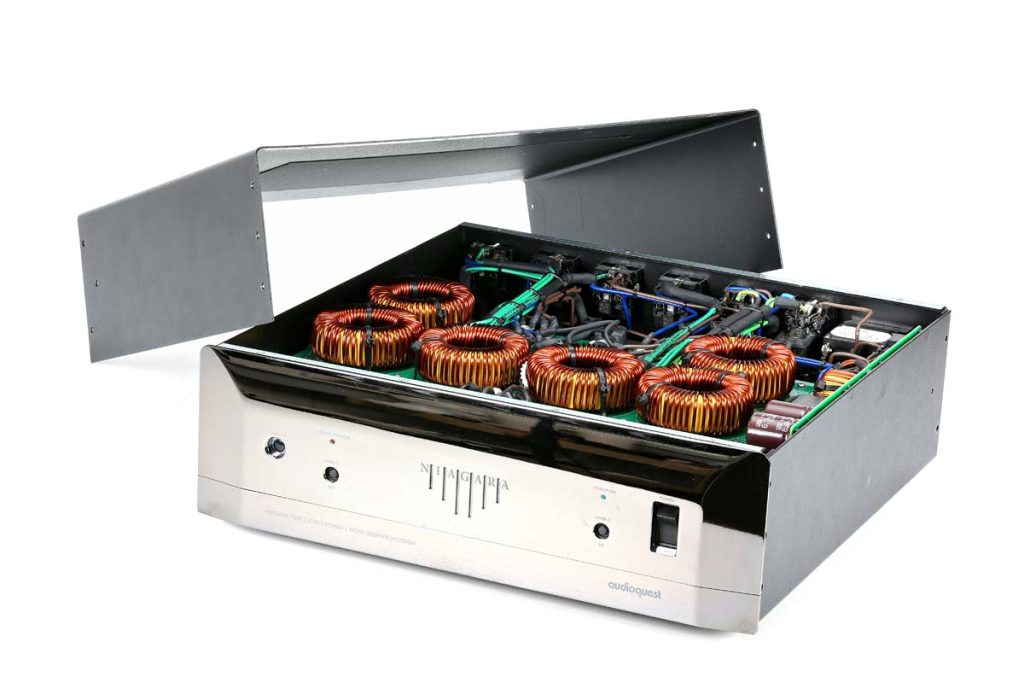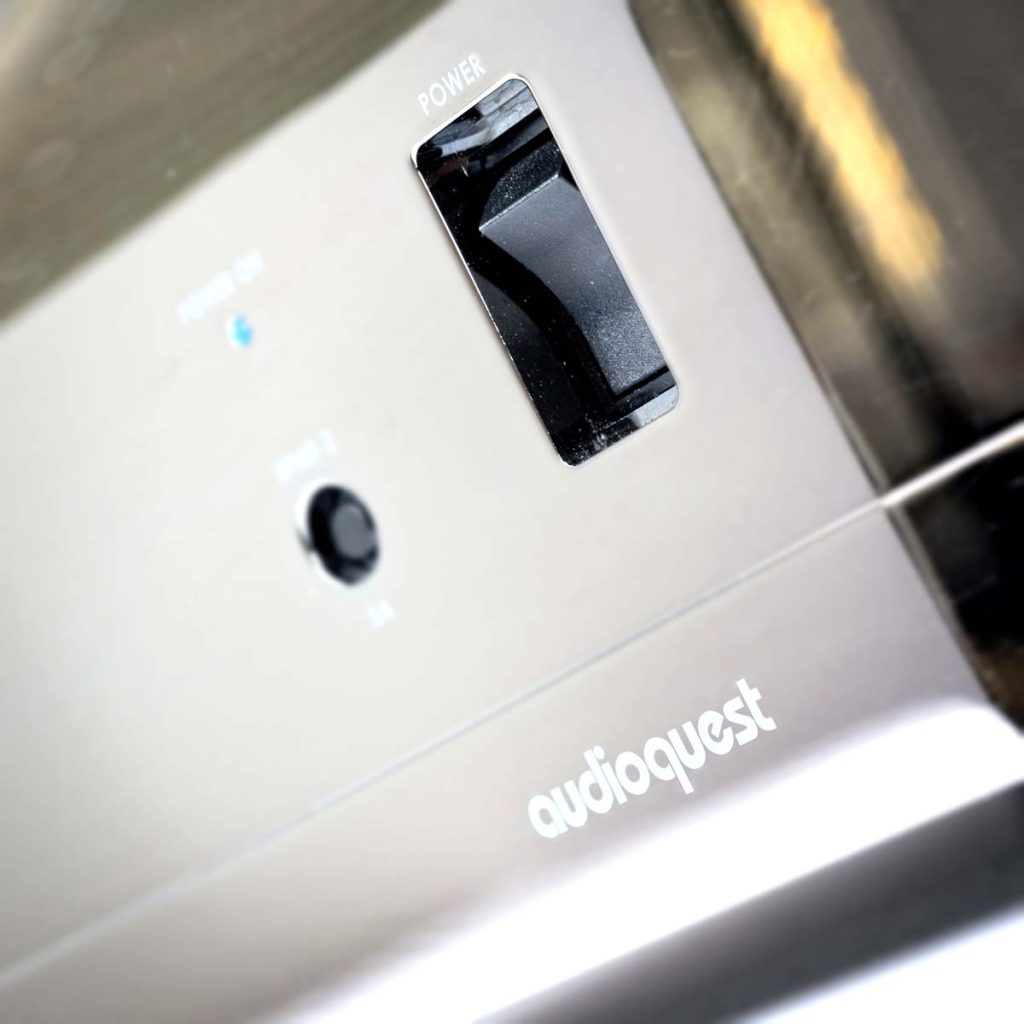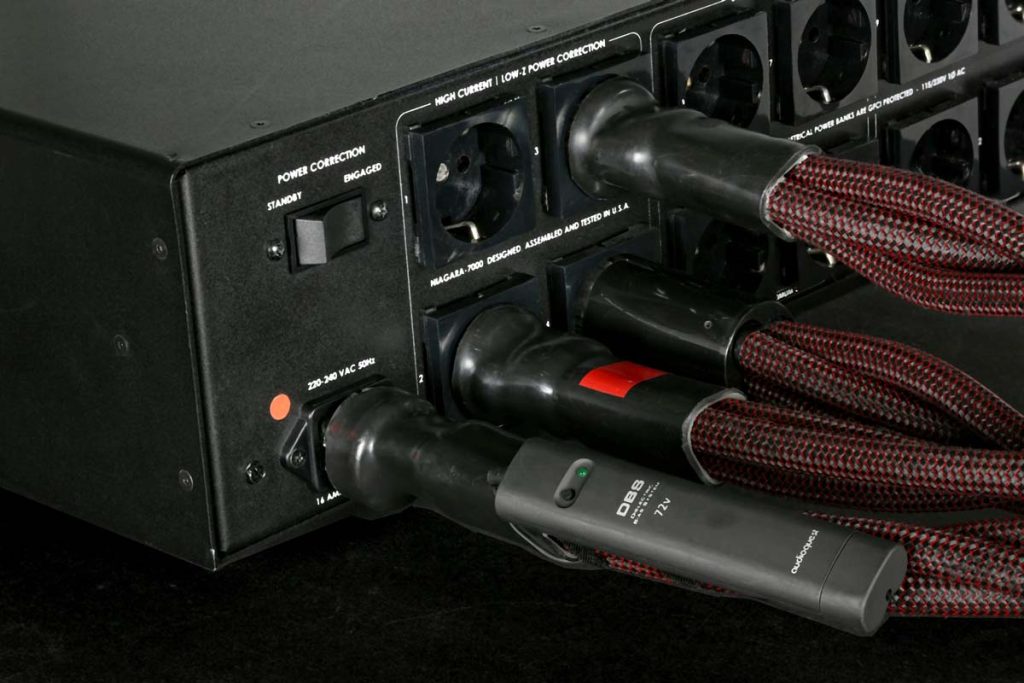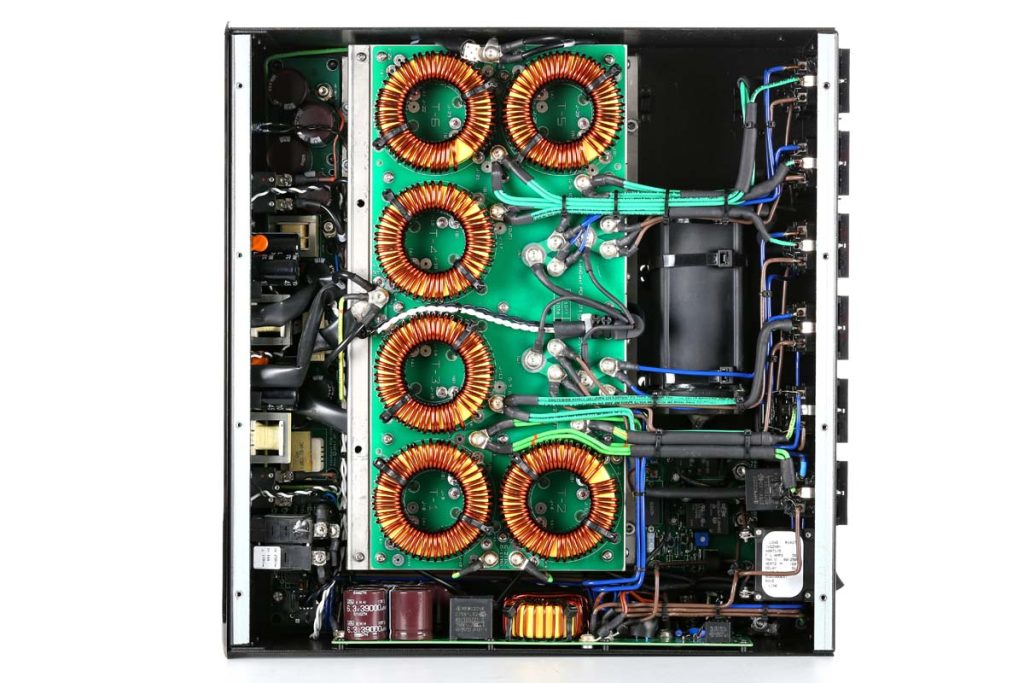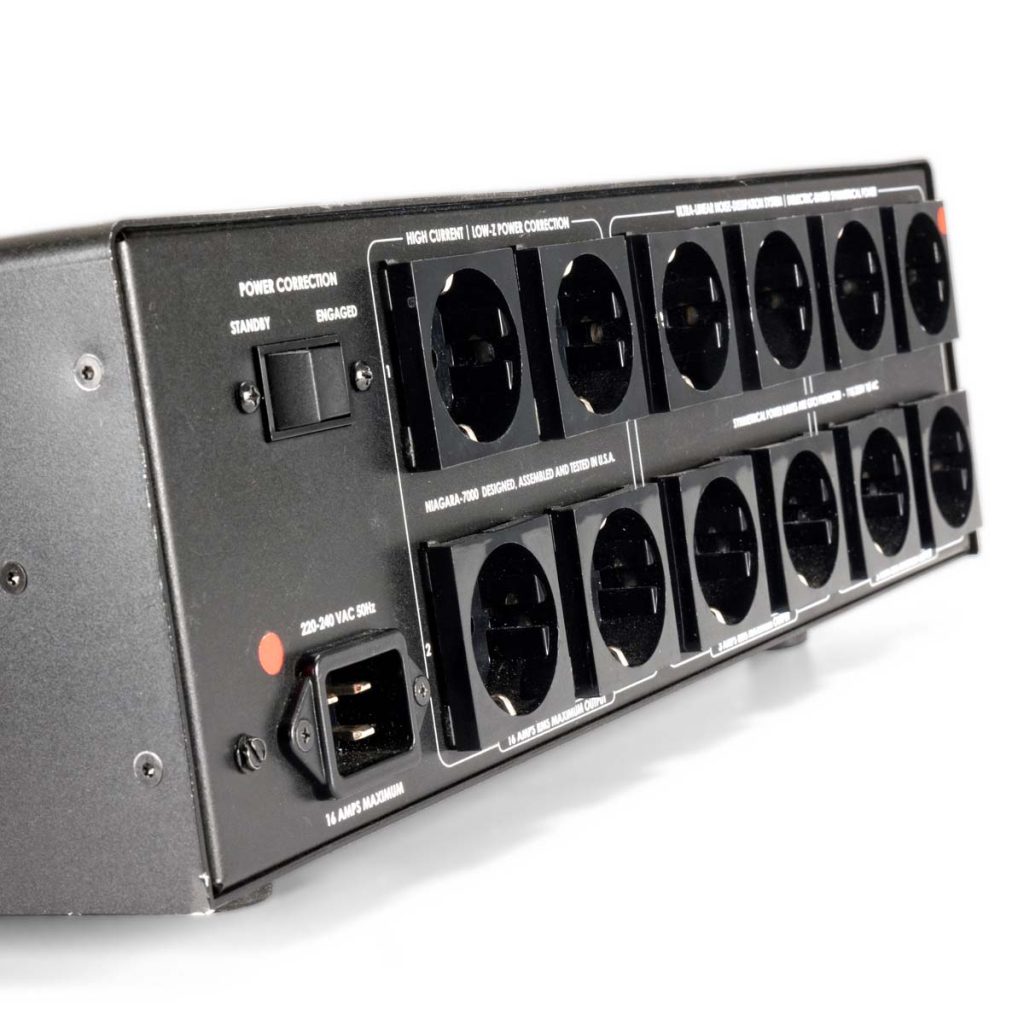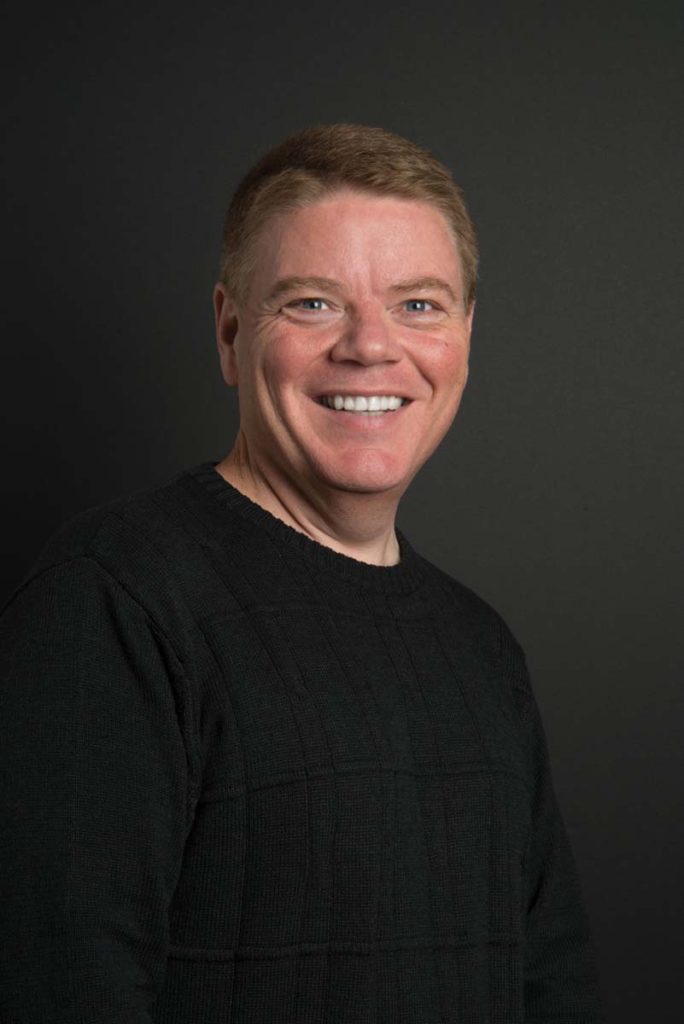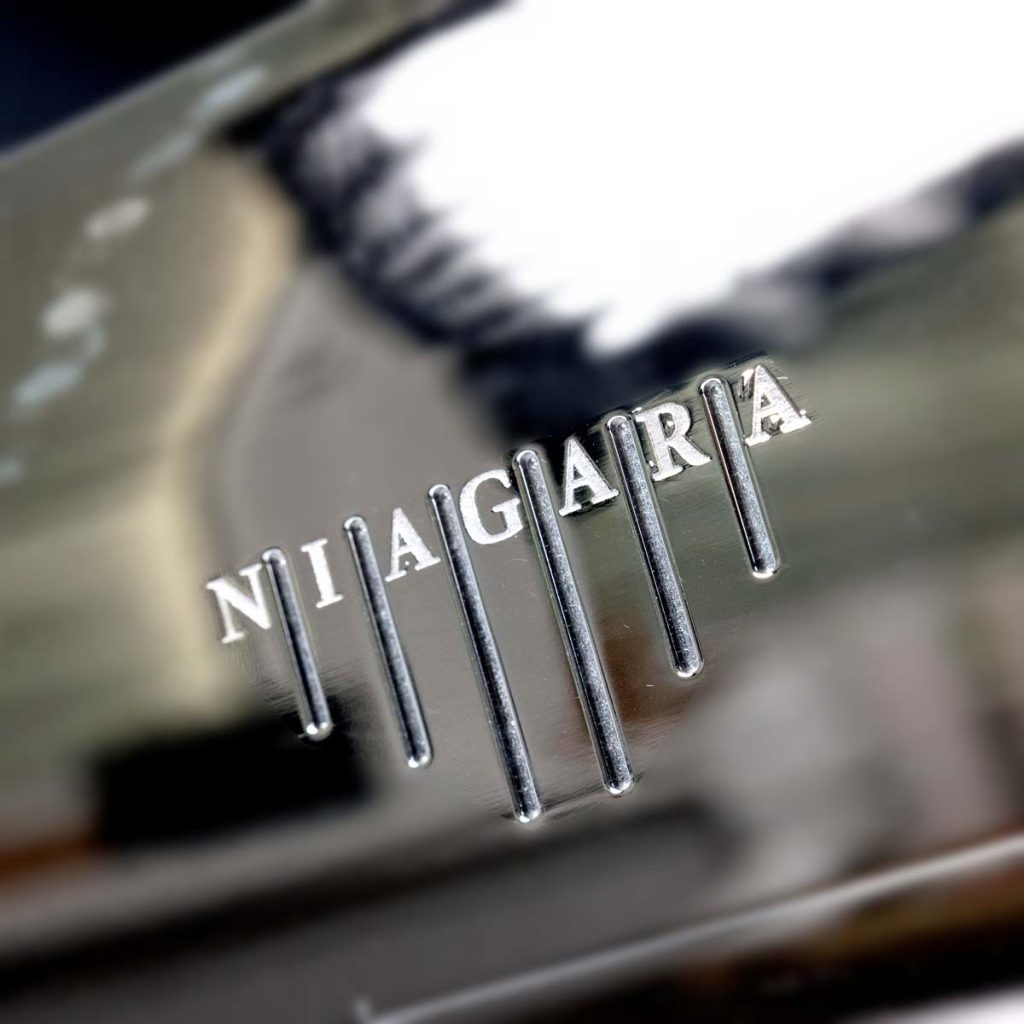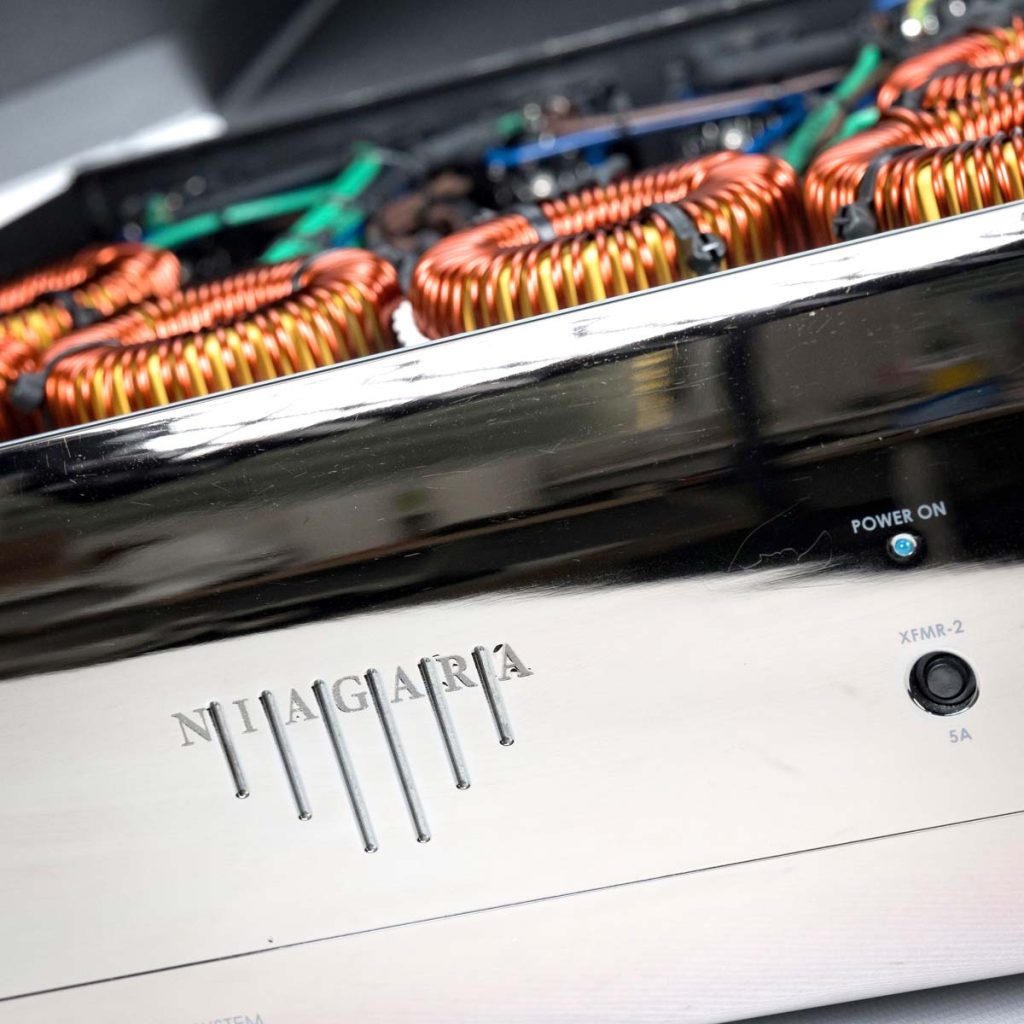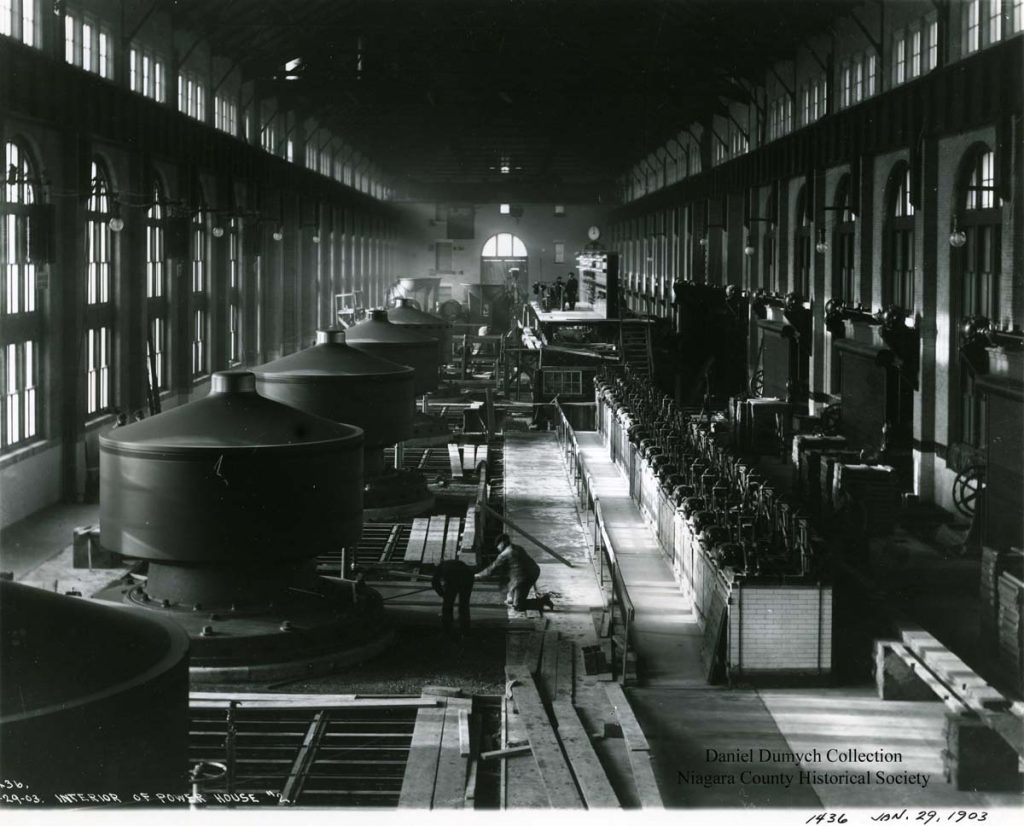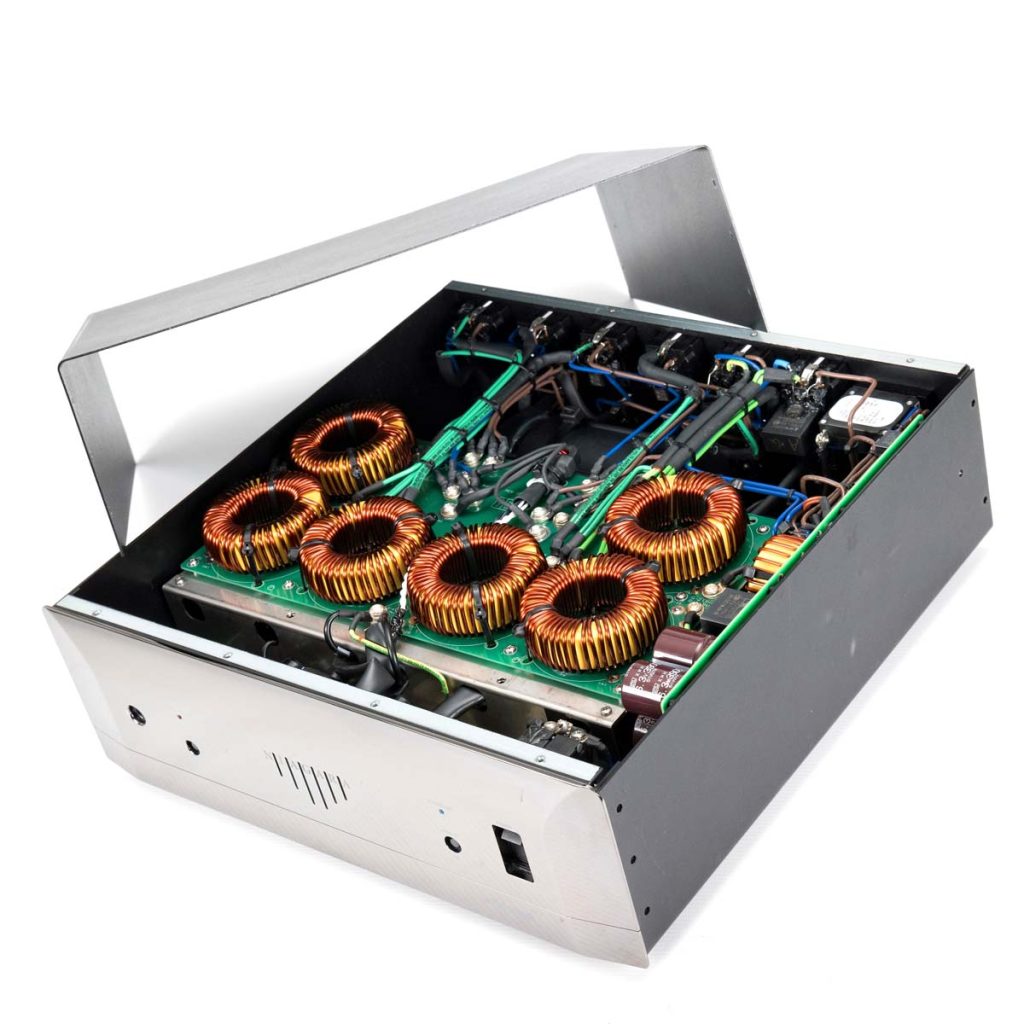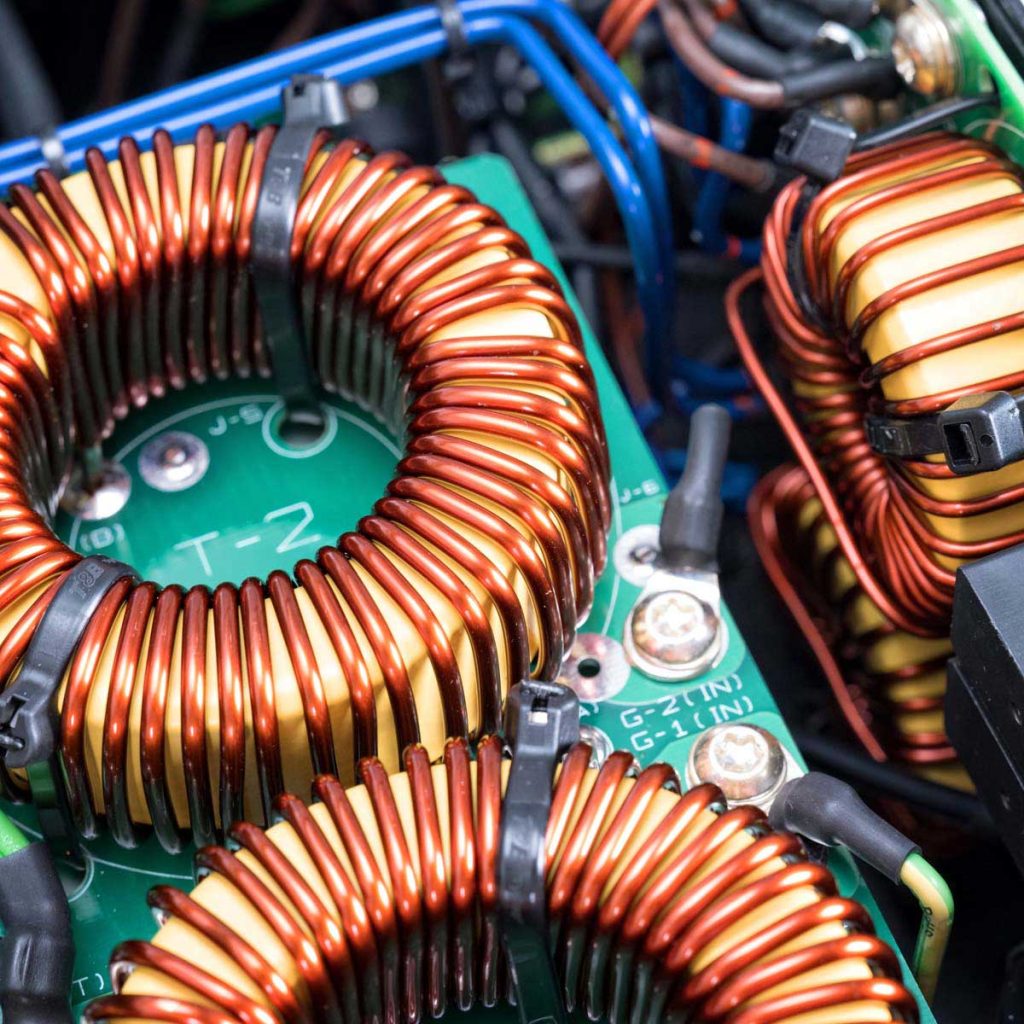Strength in Serenity
You might think the power from an electrical outlet is clean and stable. It isn’t. The AudioQuest Niagara 7000 comes to the rescue.
Essentially the whole thing sounds pretty straightforward: You plug your beloved hi-fi system into the electrical socket in the wall and everything is hunky-dory. But, as with all things in life, sometimes the quality of the power supply is good, and sometimes it’s bad. Substandard, “dirty” power isn’t really much of a problem for toasters, vacuum cleaners, and model railways as you can’t hear the difference. But when it comes to enjoying your favorite music, power quality does, in fact, play a significant role. This is even more the case the better a high-end system’s individual devices have been coordinated to work in sync with each other. For me personally, ensuring the power supply is as good as it can possibly be is on par with decent room acoustics in the hi-fi hierarchy. This means it is even more important than all the other magnificent music devices comprising my setup. A hi-fi system cannot reach its full potential in terms of sound quality unless the power supply has been perfected.
AudioQuest has now decided to throw its hat into the power optimization ring — and its new product looks mighty impressive. About three years ago, Bill Low, the fastidious head of the US firm who is known for being a lateral and forward thinker, hired a well-respected expert. Garth Powell, who has amassed a wealth of knowledge about power conditioning and audiophile applications over the past 20 years, was given plenty of time and space to create an entire series of devices at AudioQuest, as well as tasked with ensuring the top-ofthe-range model redefined the “audiophile power” market.
Enter the AudioQuest Niagara 7000. So, what exactly is supposed to be so complicated about a power filter? You just plug the power cord into the wall socket, connect the hi-fi components to the power filter, and off you go. Operating and connecting the AudioQuest Niagara 7000 properly is not really complicated. You just have to bear in mind a few basic rules, which are explained in detail in the quite lengthy operating instructions. When you read the information, you also learn the inner workings of this Low-Z Power Noise-Dissipation System (its full official name) are rather complex: The system is brimming with outstanding components, a wealth of know-how, and even a patent or two.
Of the 12(!) connection options, four outlets are reserved for power-hungry components (power amplifiers, integrated amplifiers, and loudspeakers). These outlets are specially wired and can supply even the most power-needy devices without so much as breaking a sweat. Two rows, each containing four outputs, supply all other components — like CD players, phono stages, DACs, streamers, and preamplifiers — the power supply that needs to be handled completely differently in order to squeeze out the optimum sound quality. You don’t really need to delve into all the details about the exact technology that governs the three outlet quartets. Rather, you should just do what AudioQuest considers the most important activity for every development: listen to music. So it’s time for me to hand things over to my colleague Hans von Draminski to do just that. Let’s see what he makes of it all.
+++
A case for Agent “Spooky Draminski”? Not this time. The AudioQuest Niagara 7000 definitely didn’t fall out of the sky from the hatch of a UFO. Neither was it pieced together of magical components by devilish houseelves educated in the dark arts and beavering away in the shadows of a gallows tree. Apart from the stylish front plate, this power filter is pretty much the prototype of a no-nonsense machine that, when you reach a certain quality level, every high-ender actually needs.
And the reason is clear: The power you get out of your electrical socket is dirty. If we were talking about a young boy who had just come in from playing outside, you’d be tempted to immediately throw him, clothes and all, in the bathtub. Of course this is definitely not advisable when it comes to your power supply and most certainly wouldn’t achieve the desired effect. I’ll admit I’m one of those unfortunate people who live in a big inner-city jungle and therefore have to live with all the extra distortion that pollutes the power-supply network. My apartment is located in an old building constructed over 100 years ago, and parts of it have a rather dated primary power connection. Right next door to me, they’ve been working on expanding the museum for over a year now; less than a kilometer away, a large company manufactures sports accessories such as ski goggles. With its extensive computer network, the town hall across the street also surely doesn’t contribute to improving the quality of my power supply. The Bavarian Purity Law might apply to beer, but it sure doesn’t address power. From experience, my system only ever sounds the way it’s supposed to sound on paper in the dead of night or early on a Sunday morning when assembly line operations at the ski goggle manufacturer are halted for at least a little while. However, the distortion is getting more and more noticeable and the “quiet time” when I can actually listen to my music is getting shorter and shorter. I feel like the only thing that could salvage the situation and solve my sound-quality crisis would be for me to move to the countryside in the not-too-distant future. But even out in the sticks, there’s no longer any guarantee you’ll get clean power.
These factors make me the ideal target customer for such a top device as the AudioQuest Niagara 7000, which filters and cleans the power across a very broad spectrum of frequencies and takes a balanced approach on several levels to remove the maximum amount of distorting noise from the power supply. Right at the first glance, you’ll not only notice the 7000’s very solid mechanical design, but also its lavish features: As Cai Brockmann already explained, the mighty AudioQuest can connect to 12 devices, while offering real power gobblers four separate reserved outputs that take a different approach to filtration and do not restrict musical performance. And it’s true: We can already say the Niagara 7000 fully maintains the timing and the “flow” of the connected devices and as such all the enthusiasm, too.
Over the course of several weeks, the mighty Niagara shows off all its many talents in the FIDELITY listening room with the main system we currently have set up there. You don’t need the ears of a wolf to be able to pick up on the massive differences the device makes: By way of comparison: Whenever this system has depended on a certain simple but very well-respected German power strip, it has always sounded decent and punchy, but definitely not electrifying. Every time I now switch to the 7000, it feels like I’ve traded in all the links in the audio chain and upgraded to each device’s bigger sibling in its respective product range. Practically every sound-related spectrum benefits from plugging in the US heavyweight.
I use a few test CDs, including Riccardo Chailly’s recording of Gustav Mahler’s Symphony No. 8 with the Concertgebouw Orchestra in their home concert hall, a venue known to be one of the best in the world. Without the Niagara, my reservations about the CD are at best reinforced: In the introductory “Veni, Creator Spiritus” hymn, the opulent orchestra and choirs involved in the performance sound unduly jerky, a little untidy and casual, and the wind instruments sound almost provincial. Above all, the sound is not balanced, individual sections in the orchestra push to the forefront without being asked to and negatively impact the flow of the music. Three-dimensionality and depth gradation are average at best.
Then I switch to the AudioQuest Niagara 7000: The color spectrum expands as does the space, and a decent big-city ensemble is reconverted into the exceptional Dutch orchestra that it truly is and shows the Concertgebouw fully deserves its honorific title of “royal” orchestra. A myriad of meaning-charged details are added, details that had obviously gotten lost somewhere along the way amid the barrage of distortion. The background is filled with circulating “black tones,” indicating the working condition of the music devices connected to the Niagara have been vastly improved. The fact that Chailly must have meticulously prepared for the “Symphony of a Thousand” and the dedicated Mahlerian Chailly tackled not only the broad but also the precision dynamics at all the important points in the piece is absolutely apparent with the Niagara — during the playback without the 7000, the whole thing developed into a rather garish, one-dimensional fresco. The same comparison holds true with rock, pop, jazz and folk music. David Crosby’s album Croz boasts a full, rich production and is definitely not one of those infamous listening test discs that irritate potential customers at hi-fi trade fairs. This disc is out of this world when you listen to it on a decent system. Without the mighty AudioQuest, thought, the whole thing sounds a bit like it’s stumbling all over the place, not very articulate, and colorless and indecisive. You can guess for yourselves what happened after we finished our power test marathon.
And with that, let’s return to Cai Brockmann …
+++
The mighty AudioQuest Niagara 7000 not only fascinates my colleague but me, too — and for the same reasons. Our notes about the device, which we made completely independently of each other, are astonishingly similar in every respect.
Most of the tricks and circuits used in the AudioQuest Niagara 7000 should be familiar to any decent electrical engineer. But here, too, the devil is in the detail: A product first deserves to be truly classified an audiophile device when the interaction of all the circuits and components involved has been professionally refined. And, as such, the reputedly simple power filter is in no way a trivial matter; it is a complex machine with a clear mission. After all, the trained human ear is even more sensitive to the minutest of details than any measurement equipment, especially if the high-end system involved also affects a first-class musical instrument with even the tiniest amount of atmospheric distortion. After a long and insightful visit from the Niagara 7000 to the listening studio in my cellar, I finally manage to load the 37-kilo AudioQuest beast into the trunk of my colleague’s car — with his help, I should add.
+++
Thanks for lending me a hand, Cai. My next step and the ultimate litmus test: I integrate the Low-Z Power Noise-Dissipation System into my idyllic listening setup at home, which is threatened by a whole bunch of issues that go beyond the ski goggle manufacturer. And the results were astonishing because, although the devices I have at home are in no way super top-of-the-range high-end products, the improvement in sound quality with the Niagara 7000 was so massive that I started to reconsider my plans to move. You see, the mighty AudioQuest moves even my systems — whether modern Marantz devices from the MusicLink series or a selection from my vintage collection — a few rungs on the quality ladder. It also gives an overall impression that is unequivocally more acoustically transparent, sounding more light and airy and more plausible in terms of timing and precision dynamics.
The improvements were much, much more noticeable than any improvements that could be achieved by changing any cables or bases. Of course, it sounds silly to combine a high-performance multitalented power filter costing around €9,000 with stereo devices that, taken together, cost just about the same. However, the Niagara 7000 has some smaller, less expensive siblings that apparently have very similar qualities. Anyway, I am _not_ going to move from my apartment, but also have no intentions of spending a future suffering at the hands of the ski goggle manufacturer and the town hall computer network. Especially when such a sublime power filter as the AudioQuest Niagara 7000 represents a sound investment. After all, our power supply is definitely not going to clean up its act of its own accord in the foreseeable future.
+++
Hans von Draminski has hit the nail on the head for two reasons: The distortion that attacks and pollutes the power with airborne and AC-line-transmitted distorting signals won’t be any less significant in the future. Therefore, it’s definitely worth getting an exceptional power filter, power conditioner, power processor, or, in short, a Low-Z Power Noise-Dissipation System from AudioQuest. Once you’ve installed such a top-end device in your audiophile setup at home, you can look into other hi-fi component upgrades at your own leisure — if that’s actually still “necessary”, that is. You see, the AudioQuest Niagara 7000 also demonstrates one other thing: A lot more untapped sound potential than you’ve thought is always lying dormant in your devices than what you’ve experienced so far.
In addition, anyone who simply finds the hefty (yet absolutely worthy) price tag for the mighty Niagara too much, say, for example because the system to be connected to it just isn’t in the same price category, will be glad to know that the Niagara series from AudioQuest also includes smaller, much less expensive models that are apparently just as efficient and solid. And we’ll actually be taking a look at them in the next few issues of FIDELITY. But until then, we’re quietly and secretly pleased that we can continue to use the 7000 for a little while longer and delve deeper into our music collections with it. And we would like to take this opportunity to sincerely take our hats off to anyone in a position to afford one of these masterpieces.
IT’S A MOUTHFUL!
Cai Brockmann interviewed Garth Powell, Director of Power Products at AudioQuest
Garth Powell, born in 1962, is Director of Power Products at AudioQuest, that is, head of all products ranging from power cables to complete power filtration systems. During our chat, the vinyl aficionado proved to be an attentive and quiet listener eager to answer each of my questions with well-founded knowledge and a refreshing sense of dynamism.
FIDELITY: Garth, why did AudioQuest decide to christen its range of power filters Niagara?
Garth Powell: The name is a reference to the famous Niagara Falls as well as the renowned inventor Nikola Tesla, who helped construct the world’s first commercial hydroelectric power station at Niagara Falls. But we couldn’t and didn’t want to call our own power stations Tesla as that would have been rather confusing. So Niagara stands for clean power in two respects.
What differentiates the Niagara series from other power conditioners?
First of all, Bill Low pretty much left me to my own devices and allowed me to implement my ideas at AudioQuest with hardly any limitations. This meant I could draw on my decades of experience with power products and their use in audiophile applications and even take everything to the next level when designing the Niagara components. To come up with the best possible solution, you should never focus on one single problem as is all too often what unfortunately happens. Instead, you should strive to achieve a perfectly balanced combination involving several measures. It’s all about balance, you know. The Niagara 7000 is a multistage and, very importantly, consistently efficient filtration solution with an particularly broad bandwidth. The considerably improved resolution of fine details is definitely audible and is what ultimately convinced Bill Low to commission an entire series.
Some power filters have a reputation for limiting dynamics …
Yes, this is a well-known phenomenon, but not an issue at all for AudioQuest. We really understand the requirements of power-hungry components and for this reason developed our patented Transient Power Correction (TPC). With this TPC technology, we can drive connected power amplifiers to achieve new peak performance levels. The Niagara 7000 provides a clean and fully continuous current flow through the four relevant outputs.
What is the main audible benefit that music lovers will receive if they connect a power filter such as the mighty Niagara to their current system?
Up to 30% of musical details can get lost due to distorting signals that infiltrate the hi-fi system from outside and over the power network. However, these fine details are essential to the overall enjoyment of the music. They contain all the transients, the spatial information, all the details that make a good recording a really outstanding recording. If these details are lost, it’s impossible to conjure them up again. The Niagara 7000 ensures the details remain in tact, which means the music is much richer. Let’s talk briefly about the term “power filter”: I christened the Niagara 7000 a Low-Z Power Noise-Dissipation System because the device is so much more than “just” the best distortion filtration system ever. I know it sounds like we’re bragging a bit but I really do think the resulting sound speaks for itself.
In terms of coordinating a power fil…., sorry, a Low-Z Power Noise-Dissipation System, does it help if you have a few musical bones in your body?
(smiling) It never does any harm to listen to live music or play an instrument yourself. I, for one, often use my drum kit
to assess whether a change has improved the sound or not. Careful work in the test laboratory is a must. Listening to and
assessing music using a decent system is something we like to do personally — and is decisive in determining whether or not
we’re on the right track.
What should we expect to see next from AudioQuest in terms of power products?
We’re going to further expand the Niagara portfolio from three to six products next year.
Garth, many thanks for speaking with me.

We have many a monument of past ages; we have the palaces and pyramids, the temples of the Greek and the cathedrals of Christendom. In them is exemplified the power of men, the greatness of nations, the love of art and religious devotion. But the monument at Niagara has something of its own, more in accord with our present thoughts and tendencies. It is a monument worthy of our scientific age, a true monument of enlightenment and of peace. It signifies the subjugation of natural forces to the service of man, the discontinuance of barbarous methods, the relieving of millions from want and suffering
Nikola Tesla’s speech at the opening ceremony of the hydroelectric power station, January 12, 1897.
Accompanying Equipment
Turntables: Audio Note TT-2, Clearaudio Innovation, EnVogue Astra | Tonearms: Audio Note Arm 2, Clearaudio TT-II and Universal, Nottingham Analogue AnnaArm 12″ | Cartridges: Audio Note IQ3, Clearaudio DaVinci and Concept MC, EMT JSD S75 | Digital players: Audio Note CDT-3/DAC 3, Ayon CD3sx, Soulution 541, T+A MP 3000 HV | Preamplifiers: Audia Flight FLS1, TIDAL Audio Preos | Power amps: Air Tight ATM-3211, Audia Flight FLS4, Audio Note P2SE, Bryston B14SST, T+A A 3000 HV | Integrated amplifier: AcousticPlan Mantra | Loudspeakers: Avantgarde Acoustic Uno XD, KEF LS50, Live Act Audio LAS312, Stereofone Dura, Wilson Audio Yvette | Cables: Audio Note, AudioQuest, Vovox
Power conditioning
AudioQuest Niagara 7000EU
AC outputs: 4 x “high-current/TPC” for power amplifiers, active loudspeakers, etc., 8 x “ultralinear/dielectric-biased symmetrical power” for preamplifiers and music sources (Schuko plugs) | In-phase disruptive noise dissipation: > 30 dB from 60 Hz to 100 MHz | Transversal disruptive noise dissipation: > 24 dB from 3 kHz to 1 GHz | Special features: “Transient Power Correction” (TPC), Dielectric-Biased AC Isolation Transformers, exceptionally good contacting outputs, surge protection, automatic switch-off in the event of extreme voltage, automatic reset in the event of “safe” voltage; disengageable automatic power-on and -off | Finish: front dark chrome, housing matte black | Dimensions (W/H/D): 44.5/13.5/44 cm | Weight: 37 kg | Warranty period: five years | Price: €8,990
AudioQuest
Hoge Bergen 10
4704 RH Roosendaal
The Netherlands
Phone +31 165 54 1404


